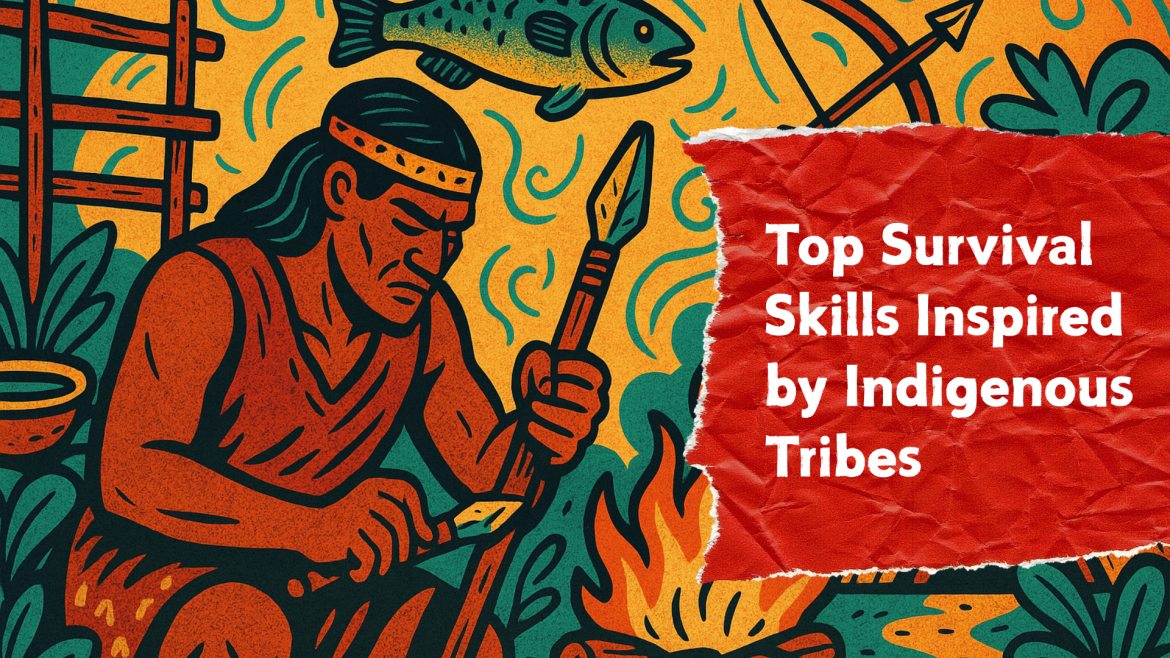Top Survival Skills Inspired by Indigenous Tribes
For thousands of years, Indigenous tribes around the world have not only survived but thrived in some of the harshest environments on Earth—deserts, jungles, tundras, and forests. Their time-tested knowledge, passed down through generations, offers invaluable lessons for modern survivalists. From creating fire with nothing but sticks to building shelters with minimal tools, these skills are practical, sustainable, and deeply connected to nature. In this guide, we’ll explore the top survival skills inspired by Indigenous tribes and show you how to apply them in your own adventures.
Why Indigenous Knowledge is Crucial for Survival
Indigenous survival techniques aren’t just random tricks—they’re a way of life, refined over centuries. Here’s why they’re so powerful:
- Rooted in Generations of Experience: These skills have been tested and perfected across countless seasons and challenges.
- Tailored to Specific Ecosystems: Whether it’s the arid Outback or the frozen Arctic, Indigenous methods are built for the land they come from.
- Harmony with Nature: Instead of fighting the environment, these techniques work with it, ensuring sustainability.
- Reliance on Natural Resources: No fancy gear needed—just the tools nature provides, like wood, stone, and plants.
In a world full of gadgets, Indigenous wisdom proves that simplicity and resourcefulness are the keys to survival.
1. Fire–Making with Friction and Natural Materials
Fire is the heartbeat of survival—warmth, cooking, and safety all depend on it. Indigenous tribes have mastered the art of making fire without matches or lighters.
Techniques Used:
- Bow Drill (North American Tribes): This method uses a bowstring to spin a wooden spindle against a base board, generating heat through friction until a coal forms.
- How It Works: The rapid spinning creates enough heat to ignite dry tinder, like grass or bark.
- Best Woods: Softwoods like cedar, yucca, or willow work best because they catch fire quickly.
- Hand Drill (Aboriginal Australians): A simpler but tougher method—twirl a spindle between your palms on a dry base board until it smolders.
- Pro Tip: Keep your hands steady and use a notched board to collect the coal.
Key Takeaway: Learn the woods in your area—soft, dry ones are ideal for friction fire. Practice makes perfect, so don’t give up if your first try fails!
2. Shelter Construction with Minimal Tools
A good shelter protects you from rain, wind, and cold. Indigenous tribes build them fast and smart, using whatever’s around.
Structures Used:
- Wickiup (Great Basin Tribes): A dome-shaped frame of flexible saplings covered with brush, grass, or hides.
- Why It Works: It’s quick to build and blends into the environment for camouflage.
- Lean–Tos and Bark Huts (Forest Tribes): A slanted roof of branches and bark propped against a tree or ridgepole.
- Snow Shelters (Inuit): Igloos or snow caves made from compacted snow blocks, trapping heat inside.
- Survival Hack: Snow insulates—dig into it for warmth instead of fighting the cold.
Survival Lesson: Pick a spot near resources (water, wood) but safe from hazards like floods or falling trees. Use what’s abundant—leaves, bark, or snow—to stay dry and warm.
3. Tracking and Hunting Techniques
Indigenous hunters don’t just find food—they read the land like a book. These skills turn you into a predator, not prey.
Skills Passed Down:
- Animal Tracking (San People, Native American Tribes): Look for footprints, scat, bent grass, or broken twigs to figure out where animals are headed.
- Start Small: Master one animal’s signs (like deer or rabbits) before moving to others.
- Silent Movement and Camouflage: Move slowly, breathe quietly, and use bushes or shadows to hide.
- Pro Tip: Time your steps with natural sounds—like wind or birds—to stay unnoticed.
Tools Used:
- Spears, Slings, Bows, Traps: Made from wood, stone, and sinew—no factory required.
- DIY Idea: Try crafting a snare from vines or cordage to catch small game.
Key Tip: Patience is everything. Watch, wait, and strike only when the time’s right.
4. Water Location and Purification
You can’t live without water, and Indigenous tribes know how to find and clean it—even in the toughest places.
Knowledge Sources:
- Aboriginal Australians: Watch animals (birds flock near water) or look for green plants in dry areas to find hidden springs.
- South American Tribes: Cut into lianas (vines) or bamboo for water stored inside—nature’s canteen.
Natural Filtration Techniques:
- Charcoal and Sand Filters: Layer crushed charcoal, sand, and cloth to strain out dirt and germs.
- Boiling: Drop heated rocks into bark containers if you don’t have a pot.
- Survival Hack: Dig a hole near a stream and let the soil filter the water naturally.
Pro Tip: Always purify water before drinking—boil it, filter it, or use tablets to stay safe.
5. Natural Medicine and Healing Plants
When you’re hurt or sick in the wild, Indigenous knowledge turns plants into medicine.
Examples:
- Willow Bark: Chew it for pain relief—it’s a natural source of salicylic acid (like aspirin).
- Yarrow: Stops bleeding and fights infection when applied to wounds.
- Cedar and Sage: Brew into teas for colds or breathing problems.
Important Note: Wild plants can be dangerous if you pick the wrong one. Study with local experts or reliable guides before trying anything.
Starter Tip: Begin with something safe like dandelion—it’s edible and easy to find.
6. Basketry, Containers, and Tools
Indigenous tribes prove you don’t need a store to get supplies—just creativity and the land.
Innovations:
- Bark Containers and Woven Baskets: Perfect for carrying water, food, or gear.
- Fishing Traps and Snares: Built from vines and sticks to catch fish or small game.
Skill Focus:
- Cordage Making: Twist plant fibers (like yucca, nettle, or cedar bark) into strong rope.
- Why It Matters: Cordage ties shelters, traps, and tools together—it’s a survival essential.
Challenge: Try weaving a small basket from grass or bark. It’s tricky but incredibly useful.
7. Seasonal and Migratory Survival Strategies
Indigenous tribes don’t just react to nature—they plan with it.
Cultural Practices:
- Nomadic Movements (Plains Indians, Arctic Tribes): Move with animal herds or shift camps to follow food and avoid harsh weather.
- Resource Mapping: Know when plants ripen, animals migrate, or rains hit.
- Modern Twist: Study your local seasons—track weather and wildlife patterns near you.
Key Insight: Adapt to the calendar of nature, and you’ll always be prepared.
Frequently Asked Questions (FAQs)
1. Can I learn Indigenous survival skills today?
Yes! Workshops, books, documentaries, and respectful connections with Indigenous teachers make it possible. Start with your local tribes’ traditions.
2. Are Indigenous survival techniques practical in modern settings?
Absolutely—they’re eco-friendly, affordable, and work anywhere. Fire-making, shelter-building, and plant knowledge don’t need Wi-Fi!
3. What’s the most important Indigenous survival skill to learn first?
Fire-making and shelter construction are the backbone of survival. Nail these, and you’ve got a solid start.
Conclusion
Indigenous tribes offer a treasure trove of survival wisdom—skills that are sustainable, effective, and proven by history. Whether you’re lost in the wild or just want to connect with nature, these techniques can keep you alive and thriving. Pick one skill, practice it, and let the land teach you the rest.
🌿 Which Indigenous survival skill would you like to learn first? Share your thoughts in the comments below!




